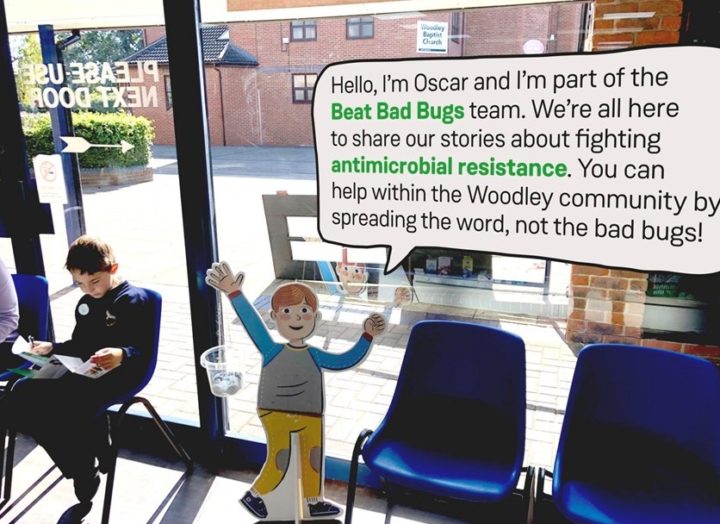Antibiotics have saved millions of lives over the years, but their over-use has led to microbes becoming resistant to them. Antimicrobial resistance (AMR) is now a global crisis.
Professor Sue Walker has investigated how design-led research can communicate the dangers of misusing antibiotics and how AMR can be prevented. She has led a project in a community pharmacy exploring ways to increase understanding and awareness of AMR with perspectives offered by information design, human factors, architecture and pharmacy, and with input from pharmacists, pharmacy users and patients. This inspired further work in Rwanda, which culminated in an award-winning dual-language campaign, ‘Beat Bad Microbes’.
Professor Walker’s work has changed how information about AMR is communicated and has improved working practices. Professional and public understanding of the problem has increased, and those on the frontline of tackling AMR now recognise that design-led approaches can help to make public health communication effective and relevant.
For example, it has shaped a Public Health England campaign on antimicrobial stewardship used across Wales, Northern Ireland and parts of England, influencing the design of an antibiotic checklist and video to encourage patients to keep taking their full course of antibiotics. And the Beat Bad Microbes materials have now been rolled out nationally in Rwanda, supported with a Commonwealth Pharmacy Association webinar.
Other cross-disciplinary projects have been inspired as a result: for example, Design Science, the company that worked the community pharmacy project, has gone on to work with bio-science and agriculture researchers at Reading on an Innovate UK-funded project on AMR in India.
Find out more
Using design to beat bad bugs in Rwanda (blog, Feb 2019)
Design competition helps local pharmacy spread the word about superbugs (blog, Sept 2018)
Field test to help dairy farmers tackle anti-microbial resistance (press release, Oct 2020)
View the full impact case study on the REF 2021 website: Transforming understanding of antimicrobial resistance through communication design

